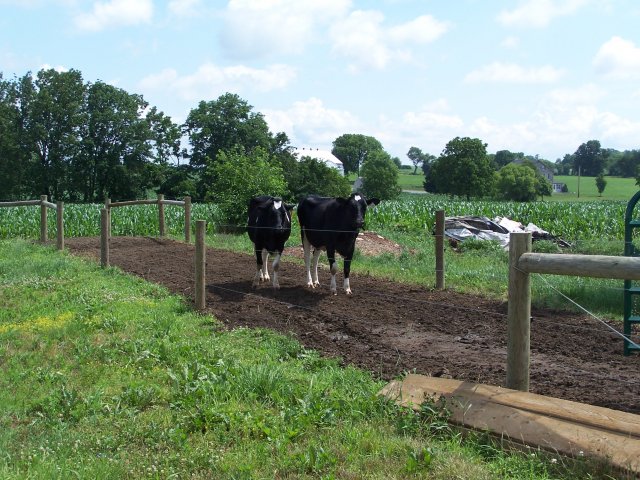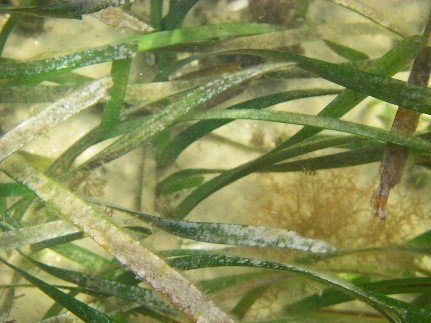How the National Estuary Programs Address — Nutrient Loads
Nutrients such as nitrogen and phosphorus are necessary for plant and animal growth and support healthy aquatic ecosystems. In excess, however, nutrients can contribute to fish disease, red or brown tide, harmful algal blooms and low dissolved oxygen. Sources of nutrients include point and non-point sources, such as the following:
- Sewage treatment plant discharges
- Stormwater runoff
- Faulty or leaking septic systems
- Sediment in urban runoff
- Animal wastes
- Atmospheric deposition originating from power plants or vehicles
- Groundwater discharges
When excess nutrients lead to low dissolved oxygen levels, marine animals must leave the low-oxygen zones for more oxygenated waters. Animals with limited mobility can die.
NEP Approach/Success Stories
On this page:
- Indian River Lagoon National Estuary Program
- Long Island Sound Study
- San Juan Bay Estuary Program
- Partnership for the Delaware Estuary
- Santa Monica Bay National Estuary Program
- Tampa Bay Estuary Program
Indian River Lagoon National Estuary Program (IRLNEP)
Indian River Lagoon NEP leveraged $24 million through the sale of the Indian River Lagoon license plates, federal 319 grants, St. Johns River Water Management District resources and state funds. These funds support implementation of stormwater best management practices throughout the 156-mile-long system. For example, the Egret Marsh Regional Stormwater Park was designed to treat polluted canal water and reduce total nitrogen by 20 percent from a 9,000-acre basin. In roughly three years’ time, the Egret Marsh Flow-way – which includes a pond and wetland system – removed greater than 32,500 pounds of nitrogen equivalent to 8,146 bags of fertilizer. By reducing nutrient loading in runoff, the NEP addresses declining water quality, recurring harmful algal blooms and negative impacts to local economies.
Long Island Sound Study (LISS)

In 2001, Long Island Sound Study worked with the states of Connecticut and New York, in concert with the EPA, to complete plans for nitrogen control that identifies the maximum amount, or the Total Maximum Daily Load (TMDL), of nitrogen that can be discharged to Long Island Sound without significantly impairing the health of the Sound. One of Connecticut’s management strategies to reduce nitrogen loading was to develop an innovative nitrogen-trading program among 79 sewage treatment plants located throughout the state. LISS was instrumental in developing this program and was awarded EPA’s first “Blue Ribbon for Water Quality Trading.”
In New York, aggregate permit limits by zone allowed for targeted reductions that reduced compliance costs by $800 million compared to individual permit limits. As a result of these actions, the current annual discharge of nitrogen to Long Island Sound from the 106 New York and Connecticut wastewater treatment plants within the watershed is 42 million pounds less than the baseline levels established in the TMDL. The reduction in nitrogen pollution has shrunk the area of unhealthy levels of dissolved oxygen in Long Island Sound by 55 percent. EPA is now working with Connecticut and New York on a collaborative strategy to continue progress on nitrogen reductions to attain water quality standards for dissolved oxygen in the Sound and to address impairments to embayments and nearshore coastal waters.
San Juan Bay Estuary Program (SJBEP)
Sanitary sewer discharges are a severe problem in the water bodies within the watershed of the San Juan Bay Estuary – injecting nutrients and pathogens into the watershed and contributing to public health problems. To address this situation, in 2015, SJBEP began a $1.2 million three-year study financed through the Clean Water State Revolving Fund (SRF) to identify raw sewage discharges and other pollutants in the watershed. The SJBEP contracted the University of Puerto to develop the first and only long-term strategy in Puerto Rico for detecting and correcting illicit discharges. As of now, the project has corrected 87% of cases identified, amounting to over 40 critical cases, thanks to the network of strategically-placed diagnostic stations that allows for effective localization of illicit discharges. Recent diagnosis shows our efforts have had a direct and significant impact in improving the conditions of affected rivers and streams. As of September 2020, approximately 70% of diagnostic stations showed “good” or “moderate” water quality. This represents a 40% increase since December 2017. Only 11% of stations were considered “impacted” or “critical, indicative of the presence of significant sanitary discharge,” a 64% decrease since December 2017.
In 2019, due to the project's success and positive impact on water quality restoration, a new phase of the project began to expand the target area by 253km2 by incorporating the Río Grande de Loíza watershed, totaling a study area of 481km2. In addition, the SJBEP was recently granted an additional $520,000, also through the Clean Water State Revolving Fund, to expand the scope of the project to include all the major metropolitan areas within the next 5-years through a collaborative effort between EPA, SJBEP, University of Puerto Rico, Mayagüez campus, and all the municipalities within the area.
Partnership for the Delaware Estuary (PDE)

Partnership for the Delaware Estuary and its partners have been implementing best management practices (BMPs) to reduce nutrient pollution in the watershed. For example, they have worked together on projects on farms, projects to address abandoned mine drainage, and projects to reduce pollution from stormwater runoff in the Schuylkill River Watershed, the largest tributary to the Delaware Estuary.
This work is largely facilitated through the PDE’s involvement as a partner on the Planning Committee in the Schuylkill Action Network (SAN), a coalition of over 500 members working to protect and restore the Schuylkill River Watershed. The SAN worked with water suppliers in the Saucony Creek Watershed to assess groundwater quality improvements over ten years, 2007 - 2017. Ground water nitrate levels have been decreasing steadily (average nitrate concentrations of 7.4mg/l dropped to 6. 7 mg/I over ten years) because of the implementation of agricultural BMPs.
These BMPs help to improve water quality on farms and contribute to a more sustainable watershed. Decreased volume of nutrients and sediments entering the waterways equates to less treatment costs for public water suppliers and safer drinking water. Reducing excess nutrient loading in the Saucony Creek Watershed also decreases the nutrient/sediment loads flowing downstream into Lake Ontelaunee, the drinking water source for the City of Reading. The success of this NEP initiative serves as a model for other agriculture intensive watersheds.
Santa Monica Bay National Estuary Program (SMBNEP)
Santa Monica Bay NEP worked with state and local partners to leverage $16.5 million to design and implement a complex stormwater infiltration and retention project for the City of Culver. Construction began in 2019 on an innovative system that will include a below ground infiltration/retention basin, capable of capturing and treating storm runoff from a drainage area of 800 acres. Runoff from 647 acres is infiltrated while runoff from the remaining 153 acres will be retained, treated, and re-used as irrigation. The system will benefit the region by capturing up to 42.79 acre-feet of runoff during a storm event, and 100% of the dry weather flow.
Tampa Bay Estuary Program (TBEP)

Tampa Bay Estuary Program’s nitrogen reduction work has led to increases in seagrass beds beyond the CCMP recovery goal. As of 2018, Tampa Bay now has 40,652 acres of seagrass. This is accomplished through TBEP’s facilitation of the public/private Tampa Bay Nutrient Management Consortium (NMC). The NMC established recommended caps on all nitrogen sources (more than 180 individual point and nonpoint sources) within the Tampa Bay watershed. In turn, these nitrogen load allocations have been adopted by the State of Florida Department of Environmental Protection (FDEP) through Water Quality Based Effluent Limits and have been incorporated into National Pollution Demonstration Elimination System discharge and Municipal Systems permits.
Annual water quality results indicate that Tampa Bay is meeting numeric nutrient criteria in all bay segments most every year. As a result, the FDEP has reclassified all Tampa Bay segments from “nitrogen impaired but managed” (category 4b) to “waterbody has attained water quality standards and targets for designated uses and no longer impaired” (category 2) for total nitrogen. The Tampa Bay estuary was a degraded ecosystem from the 1960s through the 1980s, but its water quality has been largely restored and is currently meeting State Water Quality standards for nutrients for its designated uses.
